Northeastern University, Boston, Massachusetts, USA, 28 April 2007.
Reviewed by Dan Hermes
Boston, Massachusetts, USA
The 2007 Visual Music Marathon (www.music.neu.edu/vmm/) was
an historic twelve-hour screening of an audiovisual genre called Visual
Music, held as part of the Boston Cyberarts Festival. Curated at Northeastern
University by audiovisual artist and educator Dennis Miller with contributions
by curators Bruce Wands and Larry Cuba, this watershed event is possibly
the largest, broadest, and most historically representative Visual Music
exhibit in history. The open call portion of the show received 325 submissions
from 34 countries. Of these, 60 were selected. When combined with an additional
60 works programmed by guest curation and invitation, the exhibition presented
a total of 120 works. Ranging from film and video to computer animation
to hand-drawn animations and paintings, these works explore pure sound
and video as a medium conveying emotional impact and intellectual interest. Elements
of music such as melody, harmony, dynamics, and form intertwine with their
visual counterparts: line, space, color, rhythm, and composition. The
show includes works from such artists as Robert Seidel (www.2minds.de/),
Jean Detheux (www.vudici.net/), SimonGoulet (www.oiofilm.com/), Dennis
Miller (www.dennismiller.neu.edu/), and historical work from Hans Richter,
Oskar Fischinger (www.oskarfischinger.org/), Hy Hirsh, and many others.
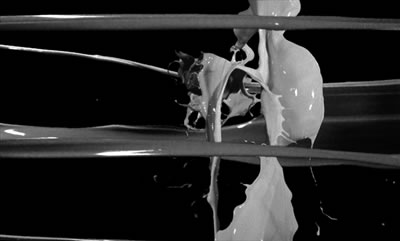
Figure 1. Image from Cinepainting (2007) by Simon Goulet.
Visual Music, a Gesamtkunstwerk combination of visual art and music, has
been in existence in various forms for three centuries. In 1704, Isaac
Newton noted in his Opticks (1704) similar proportions between prismatic
light waves and string lengths to generate musical notes. This prompted
widespread interest in a medium called Color-Music, and later, nineteenth-century
inventors Bainbridge Bishop and Alexander Wallace Rimington developed the
Colour Organ. Twentieth-century Thomas Wildred explored light alone
as an art form through his “lumia,” compositions of light and
color, made with lenses, prisms, and gels which unfold slowly over time,
and he performed these in recitals in 1924-25. Early pioneers also included
Oskar Fischinger, who added the physical act of painting to the medium,
and John and James Whitney, who brought Visual Music into the computer
age. (This information is taken from the catalog essay for the Visual Music
Marathon by Maura McDonnell, found at www.soundingvisual.com/visualmusic/VisualMusicEssay.pdf).
As
production-quality software becomes as affordable as brushes and paint,
the bohemians and trained artists join ranks with professional animators
to enter the arena of Visual Music. Advances and affordability of audiovisual
technology and the proliferation of media on the Internet are causing the
field to expand dramatically, laying the creative foundation for a contemporary
exhibit as broad in scope and geography as this Visual Music Marathon.
Visual Music is a medium incorporating film, dance, music, fine art, and
animation. Many established artists in this medium exhibit simultaneously
in art museums, in dance clubs, and see their work used in popular music
videos and video games. In order to comprehend, experience, and evaluate
this swiftly developing medium, one may gaze at Visual Music through the
known lenses of theory, history, and terminology of established mediums
and disciplines such as music (all styles), visual fine art, dance, and
film.
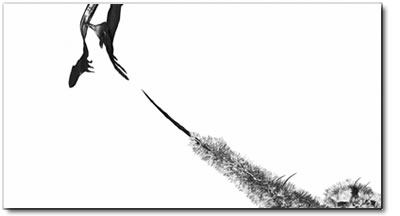
Figure 2. Image from _grau (2004) by Robert Seidel.
Reinvented German Abstract Expressionism speaks strongly through Robert Seidel’s _grau (2004), one of the most striking and unforgettable works in this 12-hour exhibit. Dense, Wagnerian choral arrangements open a harrowing experience of vague, ever-changing organic environments: orthodontic birds and cats bound in barbed wire, mountains sinking into swamps, branches and seed pods sprouting incongruent growths—dark surrealism. Objects change in focus, morph, and crystallize. In a sedate bridge section, strands of DNA swim to reverse-sampled melodies, are dismantled, and are collected RNA-style by a cell-seeming organism, or an ichthyosaurus skull, alongside mitochondria, or perhaps just a needle and thread. Mr. Seidel plays out his theme of “grey,” exploring the vagueness of emotions, sounds, images, color, and form. CPU-rendered, sometimes from dense, jagged, hand-drawn sketches, these lush, complex, high-polygon count landscapes dazzle and titillate. They can also leave the classical eye searching for the nuance and meaning found in a simple hand-drawn line or shape. Music by Heiko Tippelt and Phillip Hirsch, synthetic sounds and production techniques merge with their acoustic counterparts, mirroring and enhancing the visuals. Mr. Seidel built a customized arsenal of technologies in his exploration of three-dimensional space: VR-modeling originally intended for car design, MRT scans of his brain activity, and motion capture. In _grau (German for “grey”), the visual and musical shapes and their transformations display a formidable technical virtuosity, deliberateness, authenticity, and emotional integrity. If _grau is not a great work of art, it is a near, near miss.
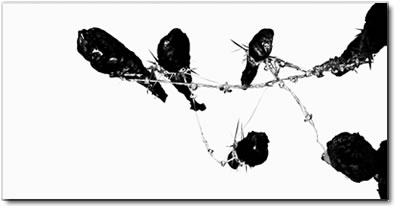
Figure 3. Image from _grau (2004) by Robert Seidel.
Even though _grauis an experimental film, I consider it more a hybrid form: a living painting (tableau vivant) of branching memory structures. The concept of bringing a painting to life was extended by capturing their evolution. So the piece is not showing one single moment, but is a “virtually frozen” painting, where the structures still move and age. I am currently planning a plasma screen installation of _grauto run much slower, almost not noticeable (10:01 hours), but have not found a suitable location to exhibit it as yet. (Robert Seidel)
Distributed throughout the Marathon
were three works by Jean Detheux (www.vudici.net/): Liasons, Rapture,
and Daydream Mechanics V Sketch. Combining hand-painting techniques
with the strengths of animation tools, Mr. Detheux morphs sculptures with
colorful layers of Pollock-inspired chaos. Two-dimensional overpainting
imposes flatness on seemingly three-dimensional animated underpinning.
In Liasons (2005), Jean Derome’s musical procession of grunting,
panting, and panicky rubber duckie noises lend immediacy, effort, and alarm
to the work. Amorphous forms transform into other amorphous forms with
striking color relationships and the occasional succession of vowels and
consonants in text. In Rapture (2005), alpha maps border the textures
in black creating clearly delineated shapes that glide across the canvas
in tandem to the jagged score. Daydream Mechanics V Sketch 3 (2006)
sounds of acoustic minimalism by Michael Oesterle, performed by the Bozzini
Quartet. Sharp whispers punctuate Balkan mordents over ostinato strings.
Sectional visuals with a whispered bridge cut to this image: a dazzling
mother-of-pearl inner-geode quivering with the organic delicacy of a live
birth. At the work’s peak, spiccato speeds the otherwise languid
pace. Tissues, cells, capillaries, all multiplying, dying, and being absorbed
again into Mr. Detheux’s ever-regenerating kaleidoscope.
All the Possible Braidings (2006,) with images by Betsy Kopmar
(www.eyefusion.net) and music by Jami Sieber, depicts a golden, scintillating
dancer on a black stage. Over rhythm guitar ostinato, muted female
rock intonations and dreamy synthesizer lines hold back through to
the end. With the underwater fluidity of cloth animations, Ms. Kopmar
manifests an abstract ballerina with a wide range of motion. Frequent
entrances and exits of the creature obscures its form, adding to the
mystery of the piece, though the rare relaxed appearance is reminiscent
of a deep-sea squid. Utilizing a variety of point-based
deformers on an otherwise simple, circular piece of cloth, Ms. Kopmar’s
dancer is bold and effective. Refinements in expression, shape, volume, and
attitude could lead to a figure as disciplined and convincing as a master human
dancer. All the Possible Braidings is a gentle, mysterious, and
hypnotic work.
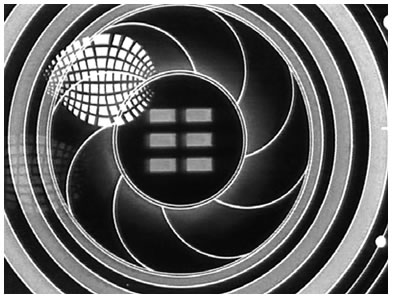
Figure
4. Image from Feng Huang (1986) by Robert Darroll.
The Marathon demonstrated the range of approaches to the integration of music and visuals. Especially early works were prone to direct visual manifestations, with motifs reflected by specific visual representations. Historic examples of this include: Oskar Fishinger’s rendition of J. S. Bach’s Brandenburg Concerto No. 3 in Motion Painting No. 1 (1947), the Oscar Peterson Trio realized by Norman McLaren and Evelyn Lambart in Begone Dull Care/Caprice en couleurs (1949), and Feng Huang (1986) by Robert Darroll. Contemporary examples include: Halkin (2006) by Shinichi Sugii, add.value 5 more (2006) by Gerhard Daurer, undulation (2006) by Harvery Goldman and James Bohm. In opposition to drawing a direct relationship between music and visuals, many works exhibited a more Impressionist approach, allowing the music to set a mood for the visuals.
Combining these
techniques are works by Dennis Miller (www.dennismiller.neu.edu/), a notable
artist as well as curator of the Marathon. His audiovisual rondo, White
Noise (2007), is a highly textural work: diaphanous membranes billow
and flagellate, atmospheric fronts spearhead invisible storms, wiry capillaries
whip into tangled 3D sculptures. The camera’s lens fragments into
shapes of varying focus and distortion. Visual forms often proceed from
the audio waveforms, with reverberating compound sinewaves and EQ-like
geometry. A departure from Mr. Miller’s otherwise chromatic approach
to color, White Noise explores controlled ranges of hue. His score
draws upon industrial samples and processed synthesizers, sounded in carefully
crafted phrases: cries of a mechanical elemental. Each year Mr. Miller’s
works increase in CPU cycles, polygon count, and sensitivity, lending an
increasingly organic voice to his silicon spirits.
Exquisitely blending music with visuals,Pierce Warnecke’s Retz/distrans (2006)
throbs with crafted grooves in neat, Haydn-like phrases precisely mimicked
by an offbeat, strobe-like visual pulse. The musical style is a Reason-sounding
cousin of industrial club music, except the sampled machines seem very,
very tiny: nano-industrial, perhaps. Mr. Warnecke’s language transcends
the music’s humble club roots as well as the simplicity and questionable
taste of the visual source material: videos of incandescent bulbs and lava
lamps. This student at Berklee College of Music, who has spent the
past ten years in France, wields a controlled palette, an even progression
of images, and the second most masterful groove composing in the exhibit.
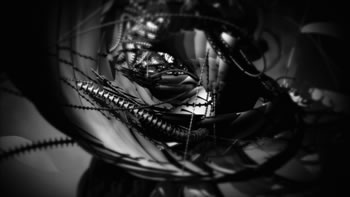
Figure 5. Image from 1.618 (2006) by Scott Pagano.
1.618 by Scott Pagano (www.neither-field.com/) visually manifests the music track of the same name by BT (www.btmusic.com/), appearing on the DVD album and live concert, Binary Universe. BT is a master groove composer and an internationally recognized pioneer of trance electronica. Mr. Pagano has worked with other musicians of note in crossover fashion, including Richard Devine, Twerk, and the Kronos Quartet. Stretching a single opening “note” into two minutes of music, BT begins the piece with a Klangfarbenmelodie statement comprised of symphonic strings, sampled percussion, synthesizer, and sampled cicadas. Bookended by geographic pans of sprawling dry mountains and deserts (perhaps a reference to current climate conditions), the exposition of Mr. Pagano’s work is a stream of visual representations of stunning, abstract mathematic structures, frames of cascading machinery, and inimitable floral collages. A repeated guitar phrase lays the foundation for dizzying thirty-second-note rhythm interplay between a battery of percussion reaching both ends of the frequency spectrum. This music is restrained, clean trip-hop, with expertly trimmed, buzzing percussion loops, and sweeping cinematic melodies and textures. (BT describes Claude Debussy and Igor Stravinsky as his forebears.) Based on the golden mean, Mr. Pagano’s whirling inner-nautelii, metal springs, pipes, scaffolding, flowers, and flames reflect the range and subtlety of the music: artificial to acoustic.
Credited with over a dozen film and animation awards worldwide, Simon Goulet (www.oiofilm.com/) was represented by Cinepainting (2007), which opens with beatnik licks belted from flutes, saxes, and eastern percussion over a throat-sung drone. Red, yellow, and orange paint splash across the screen in a loose, Pollock-derived language of trajectory, speed, and color. As the form slows to a crawl, waveform details can be heard and subtle visual nuances become visible in the interplay between air and paint. Exquisite lighting glints off of the oil in specular highlights. Klezmer-like sounds connote a high-wire circus act carried out by yellow and green dancers against a sky of blue. Ominous low strings precede a slide into beatnik/klezmer chaos over alarm sounds. In a final spectacle of geometrically cloned paintstrokes, Mr. Goulet achieves the technical apex of the work, a writhing tropical rainforest complete with chanting natives. At least as interesting as the content is the process of manufacture. Almost 12 years in the making, Cinepainting was filmed on a professionally-lit set where the actors were comprised of bins of carefully mixed oil paint. These were catapulted into the air at high speeds, filmed, then digitally composited. The music was composed by Sandro Forte and Simon Bellefleu.
Speaking to the guidelines for acceptance into this worldwide overview of the state-of-the-art of Visual Music, curator Dennis Miller stressed the importance of diversity: “geographic, technical, professional, and stylistic.” “Not a single narrative work” appeared in the show, and he sought visuals that demonstrated an “order and structure comparable to a musical structure.” This curation process served a second purpose as well, forming the foundation for an archive of Visual Music works housed at Northeastern University in Boston, Massachusetts, a historical survey of the medium as well as contemporary work.
The Visual Music Marathon 2007 is now a touring exhibition, with shows scheduled for SIGGRAPH, San Diego, USA (5-9 August 2007), Seoul, Korea (6-16 September 2007), Bowling Green, Ohio, USA (17-20 October 2007), Ames, Iowa, USA (25-26 October 2007), Huddersfield, UK (16-25 November 2007), Dresden, Germany (21-25 November 2007).